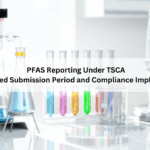The Food Contact Materials (FCM) Regulation refers to a set of rules established by the European Union to ensure the safety of materials and articles that come into contact with food. Starting January 20, 2025, Bisphenol A (BPA) and its salts will be prohibited in the manufacture of materials intended to be marketed within the EU, under the updated Commission Regulation (EU) 2024/3190.
Regulation 2024/3190 aims to address the health risks associated with BPA exposure, particularly its effects on the reproductive and endocrine systems. It prohibits BPA in plastics, varnishes, coatings, adhesives, printing inks, and other materials intended for food contact.
Certain applications—such as polysulfone filtration membranes and large-capacity liquid epoxy resins—are exempt under strict migration limits.
Benefits / Effects / Impact
Industries are given the following transition timeline to comply:
- By July 20, 2026: Single-use food contact articles containing BPA must no longer be placed on the market.
- By January 20, 2028: Repeat-use food contact articles containing BPA must cease being placed on the market.
- By January 20, 2029: All food contact articles containing BPA must be removed from the market entirely.
These transitional provisions give businesses time to adapt while ensuring the long-term protection of consumer health.
ComplianceXL provides end-to-end consulting services to help companies comply with FCM regulations and their amendments.Our robust compliance management platform enables businesses to stay updated through due diligence, supplier engagement, and comprehensive compliance documentation, as part of a proactive compliance data management strategy.
FAQs:
1. What materials are affected by the BPA ban?
The ban applies to various food contact materials, including plastics, varnishes and coatings, printing inks, adhesives, and more.
2. Why did the EU decide to ban BPA now?
BPA exposure has been linked to immune system disruptions, reproductive issues, and hormone interference, prompting a precautionary ban to protect consumer health.
3. How can companies verify BPA levels or compliance?
Companies must conduct migration testing according to EU standards and maintain documentation such as migration level reports and Declarations of Compliance (DoC).





